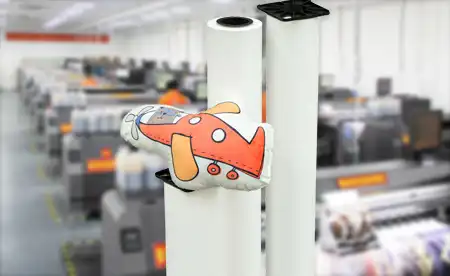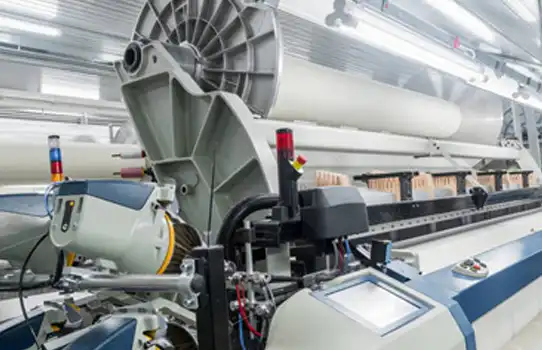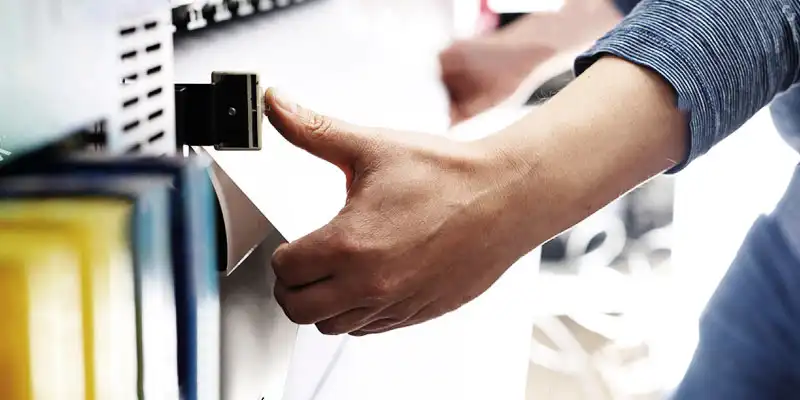HOT SALE
APPLICATION
Phone:+86-15215969856 E-Mail: 396838165@qq.com
In the fast-changing realm of digital textile printing, two major methods stand out: sublimation printing and heat transfer printing. Each approach brings its own strengths, based on the kind of material, the expected quality, and the final purpose of the product. For companies and individuals looking to boost their printing efficiency, it’s vital to grasp the distinctions between these techniques. More importantly, knowing how to apply paper for dye sublimation printing on fabrics is a key step to success.

Overview of Fabric Printing Techniques
Both sublimation and heat transfer are indirect ways to print, where images get moved onto fabrics using a mix of ink, paper, and heat. Yet, the steps and results of each method vary quite a bit.
Key Differences Between Sublimation and Heat Transfer Methods
Sublimation printing changes solid dye straight into a gas, skipping the liquid phase. This gas then merges with polyester fibers when heat and pressure are applied. On the other hand, heat transfer printing relies on special coated paper with pigment inks or toners. These are pressed onto the fabric’s surface.
Applications and Popularity in the Textile Industry
Sublimation is a top pick for sportswear, trendy clothing, home decor items, and promotional goods. This is due to its bright colors and lasting results. Meanwhile, heat transfer often gets used for custom tees, reusable bags, and small batches of personalized stuff.
What is Sublimation Paper?
Sublimation Paper is a crucial part of getting top-notch image transfers in the sublimation process.
How Sublimation Paper Works in Fabric Printing
This paper holds the Sublimation Ink as a carrier. When heat is added, the ink turns into a gas. It then sinks into polyester fibers. Changfa Digital, a trusted name, has been making sublimation paper and offering digital printing services for over 15 years. Their factory handles everything—from base paper to coating, cutting, and shipping worldwide.
Materials Compatible with Sublimation Printing
Sublimation works best on polyester fabrics or items with a polymer layer. After transfer, the textiles show great resistance: Sunproof Level 6 and Washproof Level 4-5. Some examples are sportswear materials like pure polyester bird eye fabric or interlock knits.
Advantages of Using Sublimation Paper
The perks are clear: bright shades, sharp image details, strong wash durability, and results that last. It also offers a solid heat transfer effect and dries quickly. Plus, sublimation papers from Changfa Digital are available in different weights, from 50gsm to 90gsm, to suit various needs.
What is Heat Transfer Paper?
Heat transfer paper provides another way to print. Designs are put straight onto coated sheets using pigment or laser inks.
How Heat Transfer Paper Functions in Textile Applications
After printing, the design moves to the fabric with a Heat Transfer Machine. The ink sticks to the surface instead of blending into the fibers like in sublimation.
Suitable Fabrics for Heat Transfer Printing
Unlike sublimation, which needs polyester, heat transfer can handle cotton mixes and darker clothing. It uses opaque sheets or white toner systems for such tasks.
Benefits and Limitations of Heat Transfer Paper
Heat transfer works on more types of materials. However, it might not hold up as well over time. After several washes, prints could peel or crack.
Comparing Print Quality and Durability
Knowing how each method holds up in terms of looks and lifespan helps pick the right one for your work.
Color Vibrancy and Image Sharpness
Sublimation stands out with bolder colors since the dyes become part of the fabric. It covers a wide range of shades, making it perfect for detailed photo prints.
Wash Resistance and Longevity of Prints
Sublimated prints stay strong even after many washes, with a Washproof Level of 4-5. Heat transfer prints, though, may fade or wear out sooner unless top-grade materials are used.
Equipment and Process Requirements
Each printing style needs specific gear, which affects setup costs and how smoothly things run.
Printers, Inks, and Presses Needed for Sublimation
To do sublimation right, certain tools are a must.
Role of Sublimation Ink and Printers
You’ll need dye-sublimation Printers that work with special inks, like those from Changfa Digital. Item No.: Sublimation Ink (High density); Used For: Epson I3200 nozzle (more than 8 nozzle).
Importance of High-Quality Heat Press Machines
A dependable Heat Transfer Machine is key. It ensures steady heat across the surface for consistent image transfers.
Tools Required for Heat Transfer Printing
For heat transfer, setups often include inkjet or laser Printers with regular inks. They also use coated papers made for sticking under heat and pressure.

Cost Considerations for Each Method
Money matters a lot when deciding between these two options.
Initial Investment in Equipment and Materials
Sublimation calls for spending on matching Printers, inks, and papers like those from Changfa Digital (60gsm Fast Dry Sublimation Paper Roll for polyester fabric). A good Heat Transfer Machine is also needed. Heat transfer might cost less to start, but it compromises on lasting power.
Ongoing Operational Costs and Efficiency
Sublimation shines in large-scale work due to its speed after setup. It gets even better with fast-drying papers, cutting down wait times between tasks (70gsm Fast Dry Sublimation Paper Roll).
Environmental Impact and Sustainability Factors
Businesses caring about the planet should think about the eco-effects of each method.
Eco-Friendliness of Sublimation Printing
Sublimation uses safe, non-toxic solvents that are kinder to the environment. This makes it a greener choice compared to some older methods with heavy chemicals.
Waste Management in Heat Transfer Processes
Heat transfer creates more leftovers, like backing sheets or unused bits after cutting. This can be tricky unless proper recycling steps are taken.
Choosing the Right Method Based on Fabric Type and Usage
Your decision should match the material and how the final product will be used.
Best Scenarios for Using Sublimation Paper
Polyester fabrics, like interlock knits or bird eye mesh, are perfect for sublimation. It’s great for sports gear or banners that need vibrant, long-lasting designs.
When to Choose Heat Transfer Paper Over Sublimation
For cotton clothes or dark shades where sublimation doesn’t work well, heat transfer is the better pick. This is true even if it’s less durable after washing.
Common Challenges in Fabric Printing Workflows
Every method has hurdles that need careful handling during production.
Issues with Ghosting, Bleeding, or Peeling Prints
Ghosting happens if materials move during pressing. Bleeding can come from too much dampness. Peeling often results from weak sticking. These problems pop up, especially with poorly set equipment or mismatched supplies.
Troubleshooting Tips for Optimal Output
Stick to quality materials, like those from Changfa Digital. Set the right heat and time. Keep papers in dry places. Always do test prints before big runs to avoid pricey mistakes later.
Introducing Changfa Digital as a Trusted Supplier
For anyone hunting for a dependable partner, look no further.
Changfa Digital is a skilled maker of Sublimation Paper and offers digital printing help for over 12 years.
Product Range: Sublimation Paper, Printers, Inks, Heat Press Machines, Tissue Paper
They offer Sublimation Paper (50gsm–90gsm) and Printer options like Mimaki TS300P-1800 models, paired with suitable inks.
Commitment to Quality, Innovation, and Customer Support
Their team provides online help to fix any issues you face. With OEM/ODM options, Changfa Digital crafts custom solutions from customer ideas or samples. They serve clients globally and offer 24-hour support whenever you need it.

Conclusion: Making an Informed Choice for Your Fabric Printing Needs
Deciding between Sublimation Paper and heat transfer paper depends on a few things. Consider the fabric type—polyester or cotton. Think about how long the print should last—embedded or just on the surface. Look at your equipment—specialized or basic. Weigh the costs—upfront versus ongoing. Factor in eco-goals—safe solvents or traditional toners. Lastly, think about scale—big batches or small orders. With advice from trusted names like Changfa Digital, who provide full solutions from coating to final cuts, you can streamline your textile printing process for any size or purpose.
FAQs:
Q1: What type of fabric works best with Sublimation Paper?
A: Polyester fabrics are the top choice. Sublimation Ink bonds with polyester when heated. After transfer, textiles show Sunproof Level 6 and Washproof Level 4-5.
Q2: Can I use heat transfer paper on dark-colored fabrics?
A: Yes, you can. Unlike sublimation, which needs light or white polyester, heat transfer paper works on dark clothes with special opaque layers made for this.
Q3: Is it possible to use Sublimation Ink with heat transfer paper?
A: No, it’s not. Sublimation Ink needs specially coated Sublimation Paper to turn into gas under high heat. Regular heat transfer papers don’t match this process.







